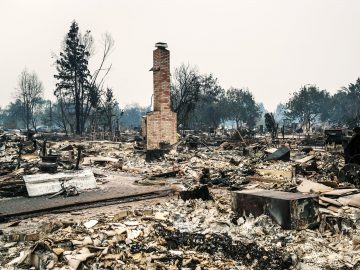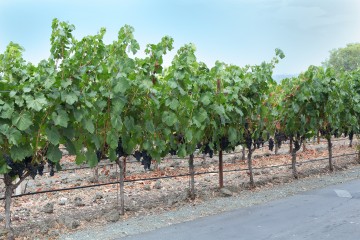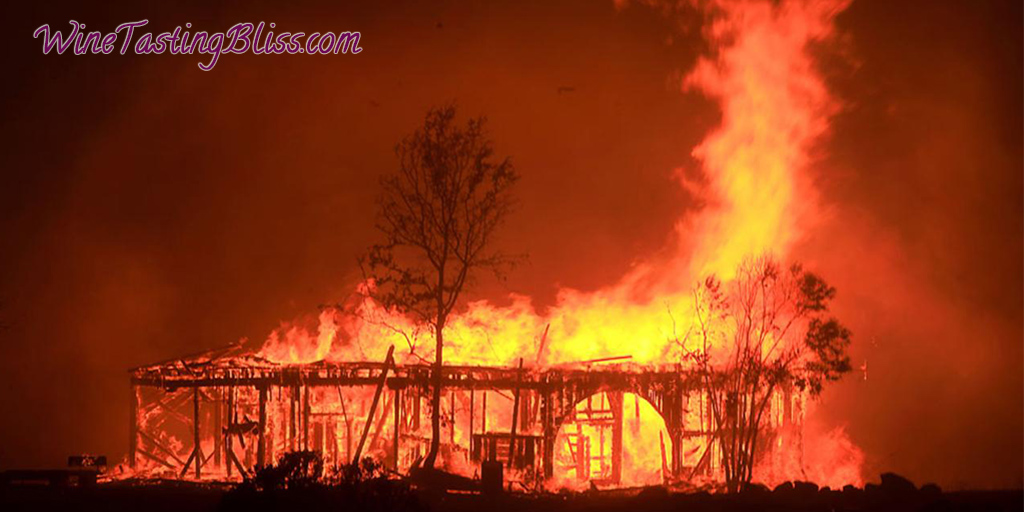The recent fires that swept the Napa wine region were devastating beyond comparison. The impact on people, animals and property are only now being tallied. What are the long-term consequences of this disaster?
“This is truly one of the greatest, if not the greatest, tragedies California has ever faced,” said Governor Jerry Brown . “The devastation is just unbelievable. It’s a horror that no one could have imagined.” At the time of this writing, the top line statistics are truly mind-boggling: 41 people dead, 220,000 acres burned, and 2,800 homes destroyed. Beyond these terrible numbers is the impact on a world famous wine industry. The Napa Valley wine industry represents over $50B in revenue and employs four of every ten Napa residents.

Although the Napa Valley is home to hundreds of wineries, relatively few were substantially affected by the fires. These wineries include: Hagahen Cellars, Helena View Johnston, Mayacamus Vineyards, Palmaz Vineyards, Paras Vineyard, Patland Estate Vineyards, Pulido Walker, Roy Estate, Segassia Vineyard, Signorello, Sill Family Vineyards, Sky Vineyards, Storybook Mountain Vineyards, White Rock Vineyards, William Hill, VinRoc, Ancient Oak Cellars, Cateau St. Jean, Gundlach Bundschu Winery, Korbin Kameron, Mayo Family Wineries, Nicholson Ranch, Paradise Ridge, Backbone Vineyard, Frey Vineyards Winery, and Oster Wine Cellars,
 One small blessing was the timing of the fire. About 90% of the grape harvest had been completed before the fires broke out. Grapes that were not yet harvested were exposed to smoke and ash for days. This can negatively impact the flavor of the juice. Wine makers can test for chemical compounds called guaiacol and 4-methylguaiacol, which cause smoky aromas and flavors. If the grapes test positive for these compounds, the harvest is essentially worthless.
One small blessing was the timing of the fire. About 90% of the grape harvest had been completed before the fires broke out. Grapes that were not yet harvested were exposed to smoke and ash for days. This can negatively impact the flavor of the juice. Wine makers can test for chemical compounds called guaiacol and 4-methylguaiacol, which cause smoky aromas and flavors. If the grapes test positive for these compounds, the harvest is essentially worthless.
The vineyards themselves were less burned than surrounding vegetation because of the constant manicuring of the area: no dry brush at the base of the vines, which themselves were comparatively moist and flame resistant. Burned over vineyards aren’t actually ruined. There will be little or no fruit produced next year, but following years should return to pre-fire yields. On the positive side, all of the ash will provide a great charcoal amendment to the soil.
What does all this mean for Napa’s legendary wine business? The 2017 vintage will have a lot of emotional baggage and may, in some cases, have a hint of smoke on the palate. Medium term, some wineries will struggle to recover from the loss of several years of barreled wine. Long term, though, experts agree that the Napa Valley wine region will be back, stronger than ever!
About the Author: John grills a mean steak and is always in the market for another wine fridge. Believes that if a winery has more than 10 employees, it's probably too big. Buys wine faster than he drinks it, but who cares?



Sending good thoughts that way!
Agreed! I hope that everything is begin done to support those impacted by this tragedy.